As Betsy wrote yesterday, Swarthmore’s Week 2 delegation arrived in Poland yesterday (Saturday) afternoon. It’s been a whirlwind day and a half, with things sure to stay busy as the COP resumes tomorrow.
Day 1: Katowice
Yesterday evening, for our first event of the trip, Saadiq, Eriko, and I (Melissa) attended a dinnertime gathering hosted by Yale University. It was posh – with hors d’oeuvres and wine – and clearly intended to be a networking event. We chatted with undergraduate and graduate students with similar elite US university affiliations about their research and how they ended up at COP. Toward the end, three big-name speakers gave short speeches: Todd Stern (former US Special Envoy for Climate Change), Susan Biniaz (former Deputy Legal Adviser of the State Department – serving as lead climate lawyer), and Tom Steyer (philanthropist/environmentalist). If nothing else, it was a relatively familiar way (oh, academia) to ease into an otherwise overwhelming setting.
Day 2: Auschwitz
The COP was closed on Sunday, so we took the day to explore – splitting up for different activities. I went my own direction, leaving before sunrise to get to Auschwitz early (the others will go next Saturday). It was an appropriately horrible day: cold, with high winds and rain.
I booked an English-language, 3 hour tour of the remnants of the grounds. We spent about 2 hours at Auschwitz I, and then another hour at Auschwitz II-Birkenau. The entire grounds is now a museum. I was moved to hear that it had opened in 1947 – at the request of survivors, some of whom also served as the museum’s first tour guides. That this experience is exactly what the survivors wanted of us made me even more motivated to go through with the visit, abhorrent as the place is.
Auschwitz I consists of many brick barracks, some of which have been refurbished for educational purposes. The tours are carefully designed to take visitors through a sequential program. First, we learned about the process that the Nazis put arrivals through: often after train rides in lethal conditions, Jews were distinguished from non-Jews, and ‘healthy’ Jews from ‘non-healthy’ Jews. Gentiles and healthy Jews went to the concentration camp, where they were likely to die from starvation or heavy labor. Non-healthy Jews (and children, elderly, pregnant women, etc.) were sent directly to the gas chambers. Next, we saw the sorted piles of the belongings of the massacred. Most Jews arriving at Auschwitz, many from other countries, had been led to believe that they were being relocated and had brought (with Nazi encouragement) bags of possessions. It wasn’t just material goods either; I cried in the room showcasing nothing but piles of hair. Finally, the tour of the first camp ends with an enforced silent walk-through of an intact gas chamber.
Auschwitz II-Birkenau is many times bigger than Auschwitz I. It is also less intact, partially because some barracks were made of wood, partially because the Nazis successfully destroyed much of it just prior to liberation. The several gas chambers, for example, were reduced to rubble. At this camp we also saw in more detail the standard living quarters (such as they were), specifically for women.
After the camps, I went directly to a Jewish museum nearby. It is one of the few representations of Jewish culture in the area, and served as something of a balm. The museum also answered a growing question of mine: why does Poland not seem to have a resurgent Jewish population, when in the early 20th century it was so huge? The answer is that anti-semitism did not end with liberation, and many Jews who initially returned home after the war soon left due to continued pogroms. But still, for this museum to exist there was a reassurance that the long history of Galician Jewish culture has not been completely erased.
This is only an extremely brief reflection on this experience – a pilgrimage of sorts for this Ashkenazi. Auschwitz is a name from my childhood nightmares, a hell that so many of us have imagined ourselves trapped in. But until planning for this trip, it was not one that I ever imagined actually physically stepping foot in.
I know this isn’t directly related to the COP, but I hope you’ll agree that it’s immensely important. Certainly other COP attendees did, because it was clear that hundreds of people made the same decision today to make the trip down from Katowice. We’ll go into this second week of the conference with, perhaps, a reminder of the devastation that humans are capable of inflicting on each other. We’d do well not to forget, so that protection of the vulnerable might be woven into the fabric of these negotiations.
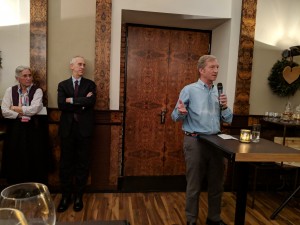
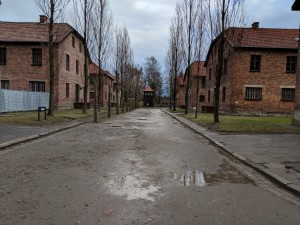
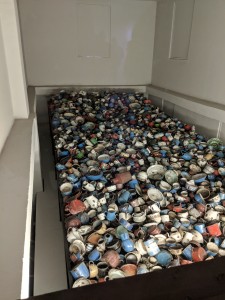
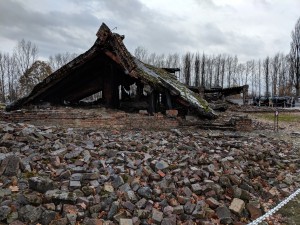
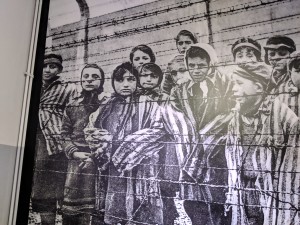
Whew! Powerfully and pointedly written, Melissa!
Hello, Greeting’s from Media PA. I am a 6th grader here at MPFS, your artical was very eye opening and lead me to many questions about your journey.
Question 1. Is Auschwitz II-Birkenau A sacred place were you need to be allowed in or is it a open place to the public.
Hi Reese! Thanks for your question. Both camps at Auschwitz are open to the public (for a fee). Especially because of the COP, there was huge diversity among the visitors who were there the same day as me. Let me know if you have any other questions.